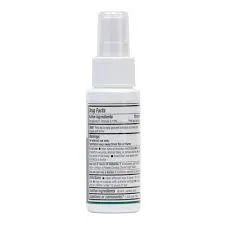function of poly aluminium chloride in water treatment
The Function of Poly Aluminium Chloride in Water Treatment
Poly Aluminium Chloride (PAC) is a widely used coagulant in water treatment processes, particularly in the clarification of drinking water and wastewater. As an inorganic polymer, PAC is appreciated for its effectiveness in eliminating impurities from water sources, making it an essential component in modern water treatment facilities.
The primary function of PAC is to facilitate the coagulation process, wherein small particles that are suspended in water aggregate to form larger clusters called flocs. This process is crucial, as it helps remove turbidity and color from water, ensuring that it meets regulatory standards for consumption and environmental discharge. The mechanism by which PAC operates involves the neutralization of the electric charges on colloidal particles, which usually repel each other due to their similar charges. When PAC is added to water, it dissociates and evenly distributes across the water, with its aluminum ions interacting with negatively charged particles. This interaction promotes the formation of larger flocs that can be easily removed through sedimentation or filtration.
One of the advantages of using PAC over traditional coagulants like aluminum sulfate is its enhanced efficiency. PAC requires lower doses to achieve the same level of coagulation, resulting in reduced sludge generation. This is particularly beneficial in managing waste and minimizing operational costs in treatment plants. Furthermore, PAC operates effectively over a broader range of pH levels, making it suitable for various water sources, including those that are highly alkaline or acidic.
function of poly aluminium chloride in water treatment

In addition to turbidity removal, PAC can also help in the reduction of organic matter, phosphates, and heavy metals in water. These contaminants, if left unchecked, can pose significant health risks to humans and the environment. By employing PAC in treatment processes, facilities can effectively address these challenges, contributing to cleaner and safer water supplies.
Moreover, PAC's compatibility with other chemical treatments allows for its integration into multi-barrier treatment approaches. It can work synergistically with other disinfectants and bio-filters, enhancing the overall water quality and treatment efficiency.
In conclusion, Poly Aluminium Chloride plays a critical role in water treatment processes by improving coagulation and flocculation. Its effectiveness, cost-efficiency, and versatility make it a valuable tool for water treatment facilities worldwide. As the demand for clean water continues to rise, the significance of PAC in maintaining water quality cannot be overstated.
-
Pbtc Scale InhibitorPBTC: A Scale Protector for Industrial Water TreatmentNewsAug.05,2025
-
Organic Phosphonate: An Efficient Defender in the Field of Scale InhibitionNewsAug.05,2025
-
Hydrolyzed Polymaleic Anhydride: Green Pioneer in Scale Inhibition FieldNewsAug.05,2025
-
PAPEMP Polyamino Polyether Methylene Phosphonic Acid For SaleNewsAug.05,2025
-
Flocculant Water Treatment: A Pioneer in Purification in the Field of Water TreatmentNewsAug.05,2025
-
Benzyl Isothiazolinone: An Efficient and Broad-Spectrum Antibacterial Protective GuardNewsAug.05,2025





